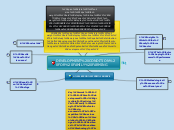по Jesús Antonio 6 лет назад
188
Class English
The study delves into the spatial distribution of development conditions for family farmers in Brazil, highlighting the challenges and opportunities for advancing rural development.

по Jesús Antonio 6 лет назад
188

Больше похоже на это
Key words
And just 5.45% belong to cooperatives.
No more than 24.46% are highly integrated into markets.
Only 33.81% adopt basic technologies such as soil fertilization
68.26% having access to electricity.
Farmers also face an unfavorable institutional context with only 12.77% benefiting from agricultural policies.
Key words